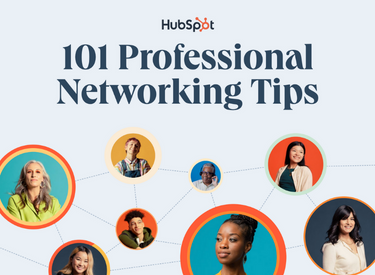Here was the challenge… The sign-up process required a full KYC (Know Your Customer) verification. In that loud, high-energy environment, asking a stranger for their sensitive personal information is a major hurdle. You can’t just hand someone a tablet and expect them to comply; you have to build trust in seconds. That’s where rapport became our most critical tool. The secret wasn’t a sales pitch. It was asking rapport-building questions. This showed I saw them as a person, not just a potential sign-up, and made all the difference in making them feel comfortable enough to complete the process.
In this post, I’ll share what I’ve learned about building that connection. We’ll cover rapport, how to ask memorable questions, and a framework for building a rapport-focused customer service culture.
Table of Contents
- What is customer rapport?
- What are rapport-building questions?
- How to Build Rapport with Customers
- Examples of Rapport-Building Questions
What is customer rapport?
Rapport means connecting with someone beyond small talk. For me, customer rapport is the difference between hearing a customer‘s words and truly understanding their needs. It’s when I create mutual trust that transforms a support ticket from a transaction into a real conversation between people.
In my experience, when I have rapport, I‘m not just solving problems — I’m building relationships. This becomes the foundation for everything that follows: loyalty, retention, and valuable feedback. It's what helps me turn a frustrated customer into someone who advocates for my brand.
What are rapport-building questions?
Rapport-building questions are the tools I use to lay the foundation. They are open-ended, sincere inquiries designed to show genuine interest in the customer as an individual. I don’t see them as small talk. I see them as the first data points in a powerful Voice of Customer feedback loop. A simple question like, “I see you’re based in Austin, how are you liking the new office?” can reveal insights you’d never get from a standard support form. These questions are your bridge from the problem to the person. They signal that you’re there to listen, not just to resolve.
Anatomy of a Memorable Rapport-Building Question
In my experience leading teams at places like Skybound Entertainment and Dapper Labs, I’ve found that the best questions aren’t just random; they have a clear anatomy.
Here’s how I break it down:
- It’s born from observation. The best questions come from paying attention. Did the customer mention their company just hit a milestone? Are they writing from a city that’s in the news? Use the context you have. At Trendy Butler, a fashion subscription service using AI, we knew a lot about a customer’s style preferences. A question wasn’t just, “How can I help?” but, “I see you’re a fan of our bomber jackets, what are you looking for to go with them for the fall season?” That shows you’re paying attention.
- It’s open-ended. A question that can be answered with a “yes” or “no” is a conversation killer. Great rapport-building questions invite a story. Instead of “Are you a new user?” I’ll ask, “What goals are you hoping to achieve with our product this quarter?” The first gets me a fact, the second gets me motivation and context I can use to truly help.
- It’s sincere. This is the most important element. You cannot fake curiosity. Customers can tell when you’re just going through the motions. For this to work, you have to genuinely care about the answer. The goal isn’t just to gather data, it’s to make a connection.
As Dale Carnegie famously said, “You can make more friends in two months by becoming interested in other people than you can in two years by trying to get other people interested in you.”
Benefits of Building Customer Rapport
Time and time again, I’ve found that rapport is the ultimate buffer when things go wrong. Every company makes mistakes. A shipment gets delayed, a bug appears in the software, or a campaign promise falls short. I’ve managed these situations across e-commerce, SaaS, and gaming, and the outcome always depends on the relationship you have with the customer before the problem occurs. When you have strong rapport, customers are more forgiving and willing to work with you toward a solution.
The benefits are not just defensive. Great rapport is also one of your best marketing tools. When I implemented the first NPS program at Skybound, we achieved an industry-leading score that was a result of the rapport the team had built, and it translated into a powerful word-of-mouth referral. A reputation for delighting customers makes you more attractive to prospects, as detailed in Advocacy Marketing: How to Do It Well. In fact, a Zendesk report found that 70% of consumers spend more with companies that offer fluid, personalized, and seamless experiences. That “personalized experience” is impossible to deliver without genuine rapport. When you build it, you are building a competitive advantage that directly impacts revenue.
How to Build Rapport with Customers
Building rapport is a skill that can be developed into a repeatable process and embedded within your team’s culture. The key is to operationalize empathy by creating clear, actionable frameworks. Here are the steps I’ve used to build rapport-centric support systems with my teams.
1. Create a 360-degree customer view.
To build real rapport, you need to see the person behind the problem. I train my teams to take 30 seconds before any interaction to understand who they’re talking to by looking at their full customer history. This includes reviewing who they are, their past conversations, and their previous support tickets. This simple act of preparation provides the context needed to personalize the interaction and changes the dynamic from reactive to personal.
2. Practice reflective listening.
Asking good questions is really the first step, and how you use the answers is just as important. A core technique I train my teams on is reflective listening. It’s a straightforward and powerful way to show a customer you are truly engaged. The process is simple:
First, listen intently to the customer’s full issue. Next, repeat the key parts of what you heard back to them to confirm your understanding, using phrases like, “So, if I’m hearing you correctly…” Finally, acknowledge the emotion behind the issue with a statement like, “I can see why that would be frustrating.”
At Skybound, this meant going beyond logging bug reports to listening for the frustration behind the bug. We then communicated that feeling to the product team. This is the essence of reflective listening. You hear the issue, confirm your understanding, and validate the emotion before moving to a solution.
3. Establish a Voice of Customer (VoC) program.
Actively seek out customer feedback by building a formal VoC program that turns customer conversations into actionable insights. At Skybound, I implemented the company’s first NPS program, which allowed the insights we gathered to become a direct feedback loop to our e-commerce and marketing teams. When you build rapport, customers provide more honest and direct feedback. You can use this information to drive real change, like improving help center content, flagging product issues, and shaping the product roadmap.
4. Anticipate future customer needs.
Showing customers you’re looking out for them is a powerful way to build rapport. I train my teams to ask proactive questions internally, like:
- “Where will a new partner get stuck in this process?”
- “What’s the one piece of information they will absolutely need on launch day?”
- “What friction can we remove from their journey right now?”
In one of my previous roles consulting a Web3-based company, this internal questioning process led us to create highly detailed onboarding guides and SOPs for new product launches. The result was a significant reduction in reactive support requests, but the real impact was on the relationship. We built a unique kind of rapport because our partners saw we were just as invested in their success as they were, simply by asking the right questions on their behalf.
5. Create playbooks for consistent empathy.
Rapport can’t be left to chance or the natural disposition of a few team members. To consistently deliver it, you have to treat empathy as a coachable skill built into your operations.
At Dapper Labs, I led a global support pod for high-passion products like NBA Top Shot. We couldn’t script for every emotional scenario a collector might have. Instead, we created a playbook of communication principles, like the reflective listening technique mentioned earlier. We then made these principles a core part of our QA program using tools like MaestroQA.
The takeaway for your team is to integrate rapport-building questions and interactions into your processes. Define what an empathetic interaction looks like and coach it weekly. That’s how you make rapport a consistent part of your culture.
Examples of Rapport-Building Questions
Here are some questions that build rapport and initiate stimulating conversations with customers.
Location Questions
![sales rapport building questions: if i had the opportunity to pass through [city/state], what would be your top recommendations?](https://53.fs1.hubspotusercontent-na1.net/hub/53/hubfs/Operation-everest-rapport-building-questions-2-20250923-5715133.webp?width=598&height=299&name=Operation-everest-rapport-building-questions-2-20250923-5715133.webp)
1. Is it true what they say about living in [city/state]? (For example, “Is it true what they say about living in L.A.? Are the freeways essentially parking lots?”)
2. Since you live in [city/state], do you go to [local attraction] all the time?
3. I have such good memories of [city/state]. I visited when I was [X years old] and absolutely loved [destination/feature]. What do you think about [destination/feature]?
4. If I had the opportunity to pass through [city/state], what would be your top recommendations?
5. Is [city/state] a good location for [customer's industry/company/profession]?
6. I've heard [nearby restaurant/city/state] has amazing [food item]. Does it deserve the hype?
7. What's your commute like? Do you drive, take public transit, or bike?
8. What brought you to [city/state]?
9. What‘s something most people don’t realize about [city/state]?
10. Are there a lot of companies in [customer's industry] in [city/state], or are you guys fairly unique?
11. Is [city/state] where your company is located, or do you work remotely?
12. When's the best time of year to visit [city/state]?
Job and Career Questions
![sales rapport building questions: on your linkedin profile, you listed [unusual skill] under your skills. how often does that come in handy?](https://53.fs1.hubspotusercontent-na1.net/hub/53/hubfs/Operation-everest-rapport-building-questions-3-20250923-7704582.webp?width=598&height=299&name=Operation-everest-rapport-building-questions-3-20250923-7704582.webp)
13. My [niece/son/grandchild] wants to become a [profession]. Do you have any advice I should pass on?
14. I saw you used to work in [different field/profession/industry]. How was the transition?
15. Do you go to [well-known industry event]? Why/why not?
16. You tweeted about going to [conference] — have you been before? I‘m debating whether or not to go, and I’d love to hear your thoughts.
17. My friend used to work at [current or former company]. Do you know [name]? What was it like working there?
18. As a rep for [company], I talk to a lot of people in [customer‘s profession], but you’re the first I‘ve met who’s ever majored in [unexpected major]! How'd that happen?
19. I read on your LinkedIn that you spoke at [event] — really impressive. Do you have any future speaking events lined up?
20. I noticed you have your [certification]. What was the process of getting that like?
21. On your LinkedIn profile, you listed [unusual skill] under your skills. How often does that come in handy?
22. You're fluent in [second language], right? Wow! Do you travel to [country] fairly often? Do you use [language] in your work? Is there a third language in your future?
23. Many of my clients in [customer's role] tell me [X detail about job]. Has that held true in your experience?
24. I‘d love to learn more about [customer’s role]. Are there any resources you'd recommend?
25. My [niece/son/grandchild] wants to become a [profession]. Are there any subjects you'd suggest majoring in?
26. What job would you want if you weren‘t a [customer’s profession]?
27. Have you always wanted to work in [customer's field]?
School and Interest Questions
![sales rapport building questions: i noticed on linkedin that you help out with [organization]. how'd you get started with that?](https://53.fs1.hubspotusercontent-na1.net/hub/53/hubfs/Operation-everest-rapport-building-questions-4-20250923-9249504.webp?width=598&height=299&name=Operation-everest-rapport-building-questions-4-20250923-9249504.webp)
28. You‘re an alum of [college]! My friend graduated from [college] in [year]. They said it was really [details]… (Or, "I’ve never met anyone who went to [college] before! What was it like? Would you recommend applying?")
29. I noticed on LinkedIn that you help out with [organization]. How'd you get started with that?
30. I saw on Twitter that you're a massive [sport] fan. Are you looking forward to [related event]?
31. In your LinkedIn summary, you mention loving [activity]. How long have you been doing that?
32. While I was preparing for our conversation, I noticed you follow [influencer] on LinkedIn. What did you think of their ideas on [topic]? (Alternatively, “Did you read their book?”)
33. I saw you follow [influencer] on Twitter. I do, too. Did you see what they wrote the other day about [topic]?
34. I saw on LinkedIn you attended [college]. My [niece/son/grandchild/family friend] was thinking of applying. What was your experience like?
35. Do many people from [college] end up in [customer's current location]?
36. Would you go back to [college] again for a graduate degree?
37. Are there any leaders in your space you'd recommend following?
38. What was the best class you ever took at [college]?
Content and Activity-Based Questions
![sales rapport building questions: i saw that you tweeted about [author/book name]. i'm looking for a new read, should i try [author/book name]?](https://53.fs1.hubspotusercontent-na1.net/hub/53/hubfs/Operation-everest-rapport-building-questions-5-20250923-1376873.webp?width=598&height=299&name=Operation-everest-rapport-building-questions-5-20250923-1376873.webp)
39. You recently tweeted a link to [podcast/radio show]. Have you listened to [specific episode/similar show]? (This question also works for books, movies, and TV shows.)
40. I loved what you [blogged/shared] the other day about [topic]. Have you read [related article]?
41. Since you‘re interested in [topic], I was wondering if you’d read [book on topic]?
42. I saw that you tweeted about [author/book name]. I'm looking for a new read. Should I try [author/book name]?
43. I‘m putting together a list of great blogs for [customer’s industry]. Do you have any recommendations?
44. I‘m putting together a list of must-read blogs for any [customer’s profession]. Which ones do you like?
45. I‘m buying a book for someone’s [milestone year] birthday. Do you remember reading anything around that time that really changed your life?
46. I saw on [LinkedIn/Twitter/Facebook] you're interested in [topic]. Do you have any related recommendations?
47. I saw on [LinkedIn/Twitter/Facebook] you're interested in [topic]. How did you [learn about/come across] that [topic/field]?
48. Do you subscribe to any newsletters about [topic/industry/product category]?
49. I read the [article/blog post/interview/white paper/ebook] you shared on [topic] on [LinkedIn/Twitter/Facebook]. What did you like about it?
50. Are you reading any interesting books these days?
Company Questions
![]()
51. Congrats on [recent company announcement]! How long was that in the works?
52. I saw [company] won [award] recently — way to go. Did you submit an entry, or were you unaware your team was up for consideration? Who were you competing with?
53. Your company just [opened up/moved to] a new office, right? What's the [neighborhood/city] like?
54. I saw on Twitter that [you/your company] just started using [non-competitor product]. We were thinking of trying that one out. What's been your experience so far?
55. Your company's retreat photo came up on Instagram. Did you like [destination]? What was the highlight of the trip?
56. I was browsing your company‘s site when I came across the blog. I loved [your/your coworker’s/your CEO's] post about [topic]. What do you think about [related topic]?
57. I came across [company's] social media accounts while I was preparing for our call. It seems like a [fun/interesting/fast-paced] place to work. What do you think?
58. I learned about [company's] unique tradition of [doing X] on [your company blog/social media]. How did that tradition begin?
59. I learned about [company's] unique tradition of [doing X] on [your company blog/social media]. Is that your favorite tradition?
60. Your company seems to host [online events, customer events, recruiting events, philanthropic events, industry events] fairly often. Are you involved in those?
61. I saw that your office is based in [city/neighborhood]. Do you like to go out to [restaurant] for lunch?
Other Questions
![sales rapport building questions: are you planning any work trips or vacations this [season]?](https://53.fs1.hubspotusercontent-na1.net/hub/53/hubfs/Operation-everest-rapport-building-questions-7-20250923-6306721.webp?width=598&height=299&name=Operation-everest-rapport-building-questions-7-20250923-6306721.webp)
62. I read on [LinkedIn/Twitter/your blog] that you think [opinion]. I feel the same way — but I‘m always curious to learn how other people formed their opinions. How’d you come to this one?
63. You seem to have a pretty busy schedule. Do you have any productivity tips?
64. It seems like you‘re fairly busy — do you use apps to stay organized? I’ve been looking for a good one, so recommendations would be helpful.
65. You seem like someone with good Netflix picks. What have you enjoyed recently?
66. The weather is very nice here. How's it where you are?
67. Are you planning any work trips or vacations this [season]?
68. I saw the picture you shared of your [pet] on social media. Have you ever thought about making [him/her] an Instagram account?
Building Rapport with Customers
When I started my career, I thought my job was to have all the answers. After over a decade of building and leading teams, I know now that my real job is to ask the right questions.
While technology like the AI chatbots we used at Dapper Labs can handle a variety of simple and complex queries, your value as a human is in your ability to connect. This article provides a long list of questions, but rapport isn’t about memorizing lines. It’s about developing your curiosity.
If you take one thing away from this post, I want it to be this… Start small. Pick one question and make it your own. The habit of asking thoughtful, genuine questions is the single most valuable asset you can develop as a customer-facing professional. Learn what to avoid and how to master these skills in 6 Key Mistakes You Can Make When Trying To Build Rapport. It’s what turns customers into partners and feedback into innovation.
Editor's note: This post was originally published in June 2019 and has been updated for comprehensiveness.







![What Is Customer Goodwill? [Definition + Examples]](https://53.fs1.hubspotusercontent-na1.net/hubfs/53/Customer%20Goodwill.png)
